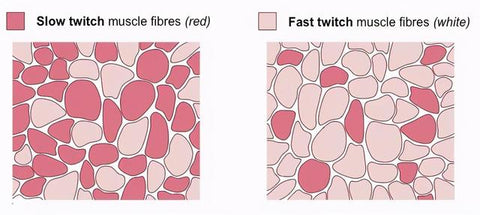Why Occlusion Bands BFR Training is so Powerful?
Blood flow restriction training method (BFR), also known as pressurization training, hemoblock training, KAATSU training, etc. is a training strategy that involves the use of a pressurized device placed around the limb during exercise to maintain arterial blood flow to the muscles while preventing venous blood return.
Through the local restriction of blood flow, changes in hormone levels are triggered, ultimately causing systemic effects on the body in the form of increased levels of protein synthesis, increased strength, resistance to muscle atrophy, and improved vascular system.

It has been shown that when myocytes swell, they are able to stimulate the reorganization or growth of myocytes; when metabolic stress occurs in myocytes, it produces a buildup of lactic acid in myocytes and this metabolic lactic acid can directly stimulate muscle growth. The direct fatigue caused to the muscle thus forces the nervous system to recruit the largest fast muscle fibers with maximum growth capacity.
The proper use of BFR technology can not only reduce the weight and training intensity, so that those who originally do not have enough time, do not want or can not let the joints to bear the pressure of large weights, or even weak people can also achieve muscle gain and promote muscle growth training effect. Blood flows into the muscles through the arteries during training, and the blood flow in the veins is restricted, preventing some of the blood from leaving the muscles in motion, which can effectively help muscle hypertrophy.

The BFR Study Showed
Dr. John Rusin, a physical fitness specialist who specializes in sports physical therapy and rehabilitation, describes in his functional muscle building program that this method can reduce stress on joints and has excellent results for localized muscle growth in the upper and lower extremities.

Dr. Stray-Gundersen combined BFR training with B STRONG blood flow restriction training equipment, and quickly became the designated technical partner of many teams in the NBA, NFL, MLB, NCAA and other events in the United States, and the only technical partner of the famous training organization EXOS in the field of blood flow restriction, the U.S. Navy Seals and the U.S. Army are also use it.

The scientific principles of BFR blood flow restriction training have been proposed as early as the 1960s, but it was not until a few years ago that they became widely popular in practical application for this very reason.
The equipment used for blood flow restriction training method includes occlusion bands, Kaatsu apparatus, etc., which are used to restrict blood flow to the exercising muscles.
About Occlusion Bands Training Methods and Precautions
Q1: Where should the Occlusion Bands be tied?
It is recommended to tie the compression band at the head and end of the arms or legs, not in the middle of the limbs.
Q2: How much weight should I carry when implementing the blood flow restriction bands training method?
The main advantage of the occlusion training bands method is that it allows the user to effectively increase muscle size at a low intensity. Some studies have shown that the use of blood flow restriction bands while walking can increase muscle size. Weight training with BFR training bands is more effective in strengthening muscles and strength than walking.
Generally only 20% muscle growth can be obtained with lifting maximum muscle strength (1RM: 1 Repetition Maximum, 1 repetition maximum strength), and the muscle growth in this case is mainly caused by slow muscle fibers, not fast ones.
Studies have shown that the most appropriate BFR strength to aid muscle growth is somewhere between 40-50% of 1RM. If you are using the blood flow restriction training method during recovery, then weight training at 20-30% of 1RM is more appropriate and will be beneficial to slow muscle fibers.
Q3: Do compression training bands need to be tied loosely, or is it better to tighten them?
In one study, researchers had subjects wear a compression band on their arms and applied 40% and 80% of the pressure needed to block an artery, and then had the subjects demonstrate either 20% or 40% of their maximum muscle strength. They observed that both produced the same amount of muscle and strength gains when the arm was subjected to 40% and 80% of the pressure and the exercise intensity was 40% of the maximum muscle strength. Therefore, it is better to tie the straps loosely than to tie them too tightly.
Best advice: Tie the straps as tight as you feel appropriate and at 40-50% of your maximum strength for heavy training, not too tight or you may risk blocking an artery.
Q4: Does the blood flow restriction training method have any effect on other unrestricted muscle groups are also beneficial?
Actually, BFR training method is also beneficial for chest, back and gluteus maximus, which can increase the activity of other muscles that are not restricted by blood flow.
Simply put, when strapping the arms or legs, the nervous system feels extreme fatigue in the extremities, thus allowing the body to maintain as much strength as possible and absorb more muscle from other areas that are not under pressure from the straps.
The study, published in the journal Clinical Physiology and Functional Imaging, said that restricting blood flow to the arms while doing the bench press instead increased muscle activity in the pectoral muscles by 16 percent. The study also found that people who used blood flow restriction training methods to train their legs and perform arm exercises at the same time had faster growth of arm muscles than those who did not use blood flow restriction training methods. Although the exact reason for this is unclear, the growth factors released through the blood flow restriction training method may have enhanced the metabolic effects of other cells. Therefore, when restricting blood flow to the muscles of the arms or legs, muscle growth in the chest, back, and gluteus maximus is also promoted.
Q5: What do I need to pay attention to for muscle recovery after performing BFR blood flow restriction training?
Compared to normal intensity training, although the BFR blood flow restriction training method feels more fatiguing after exercise, there are fewer cases of muscle damage or strength loss after 24 hours. Therefore, the muscle recovery period for this training method is shorter and can be implemented at one day intervals, while the blood flow restriction training method, which is performed 2-3 days per week, is most effective in building muscle and strength.
However, blood flow restriction training requires high repetition training (15-30 reps), which may lead to some muscle damage if you are not used to such high frequency training, so special attention must be paid. In addition, if you are new to BFR blood flow restriction training, it is recommended that you start with once a week and slowly increase to three times a week.
Q6: Can BFR blood flow restriction training be combined with other training?
In a study of BFR training combined with high intensity weight bearing exercise, it appears to be effective in improving muscle mass.
The testers used 60% high intensity training with the BFR method and found that the subjects gained as much muscle mass as 100% high intensity training.
This means that the BFR blood flow restriction training method can increase muscle growth and can be used either as a stand-alone exercise or in combination with other weight training; because BFR blood flow restriction training causes very little muscle damage, it can be used to enhance 60% of the high intensity training volume during fat loss. This allows athletes to progress while allowing their joints or injuries to slowly heal. So the BFR blood flow restriction training method can be used during light recovery, near the end of a workout or for therapeutic purposes.
Q7: Is blood flow restriction training safe for the cardiovascular system?
The BFR blood flow restriction training method is primarily intended for people who are healthy, have no specific medical conditions, and are in the habit of performing high intensity exercise on a weekly basis.
It has been suggested that restricting blood flow can damage veins and even cause long-term damage. However, the study noted that despite the restriction of blood flow during training, after about 4 weeks, the ability to dilate blood vessels and increase blood flow was instead enhanced compared to traditional weight-bearing exercise.
When athletes perform high-intensity weight training (intensity of 80-100% of maximal muscle strength), mean arterial blood pressure reaches twice its usual level and heart rate reaches its highest level.
However, when training from a low intensity BFR, blood pressure and heart rate rise by only 11-13%. This shows that traditional high-intensity weight training has a greater effect on blood pressure and heart rate and more intense muscle contraction, and more importantly, even moderate intensity traditional weight exercise may block blood vessels, so the BFR blood flow restriction training method is very safe for the population for which it is recommended.
Q8: What is the correct way to use the occlusion bands?








